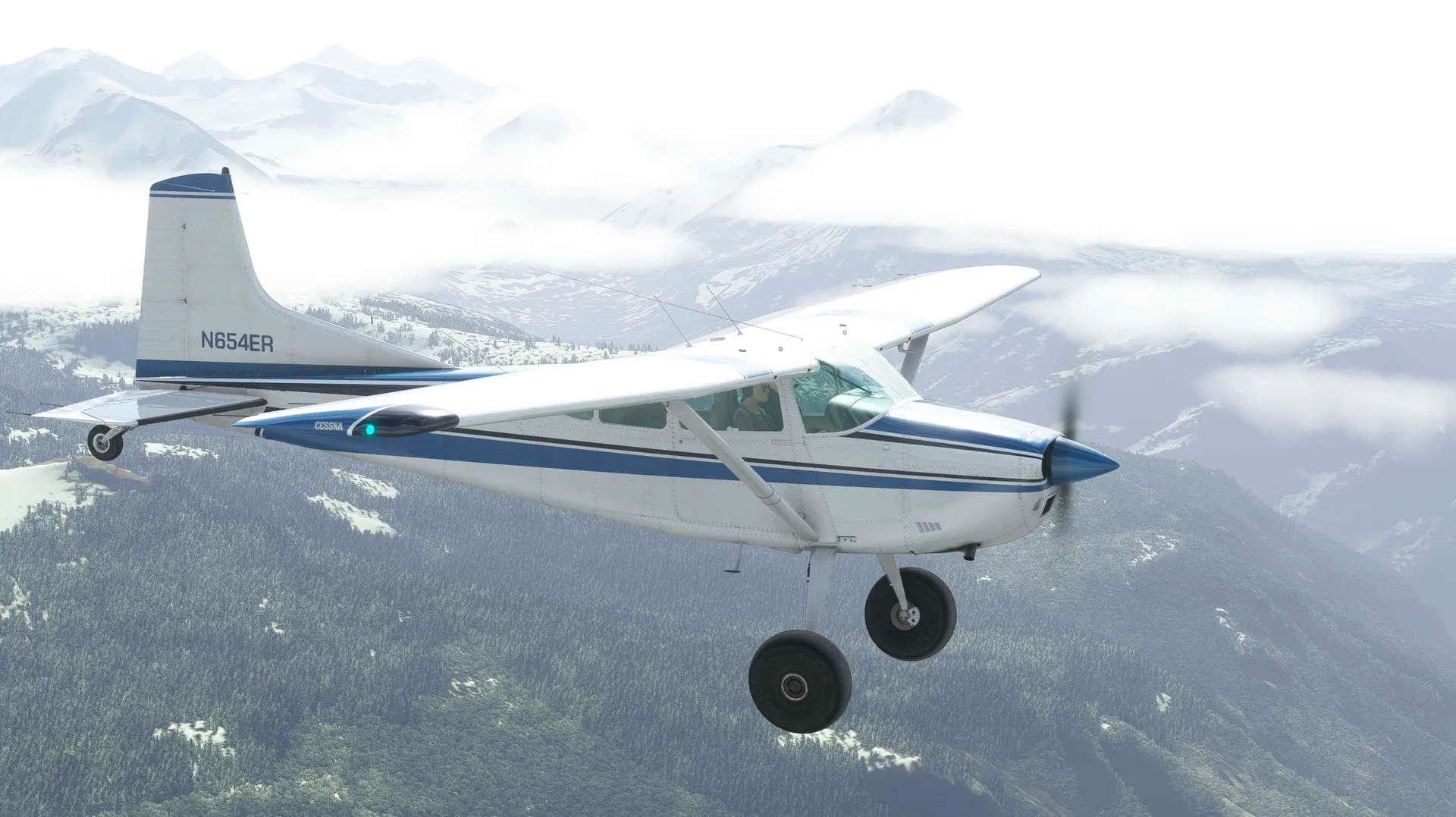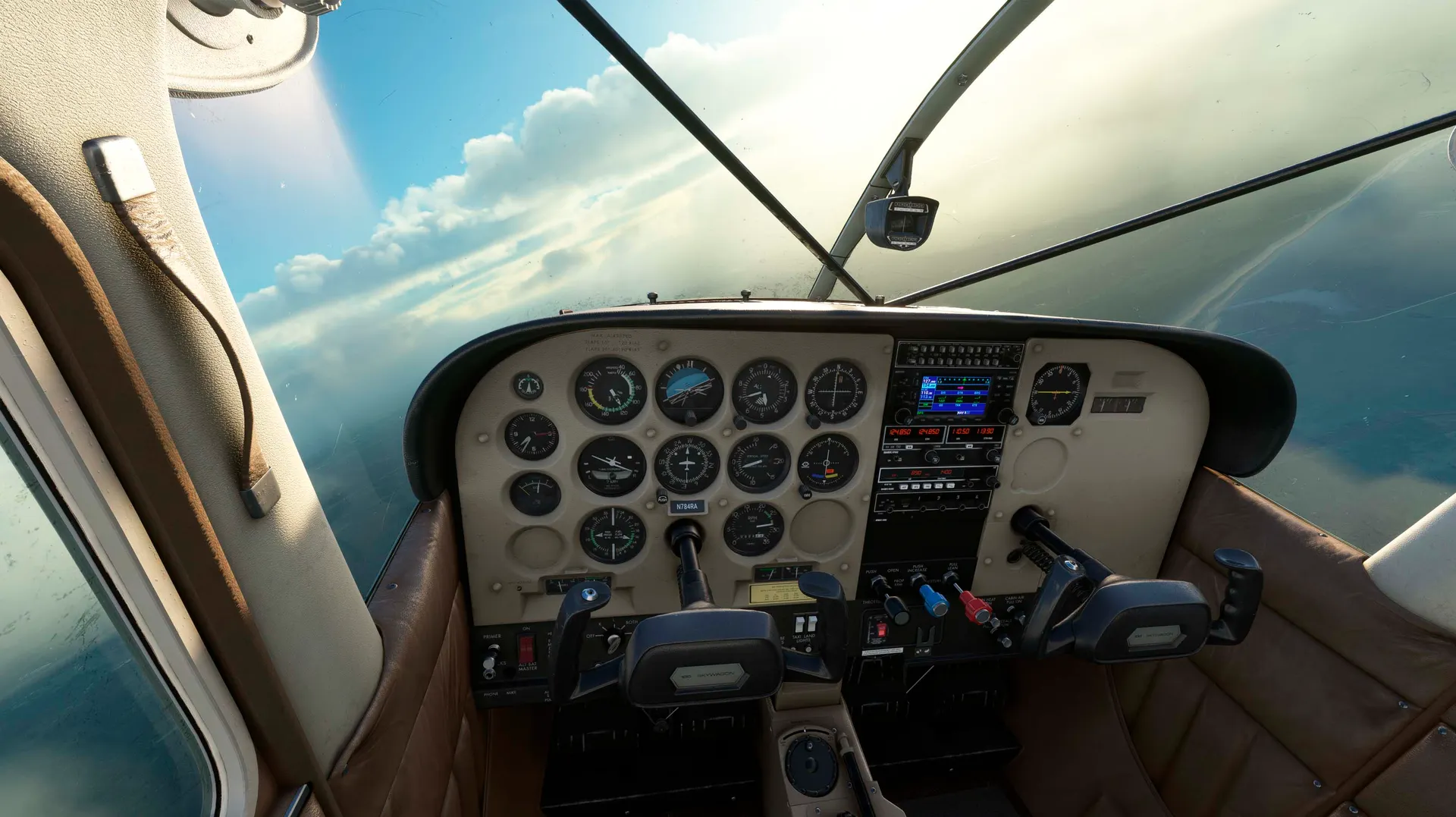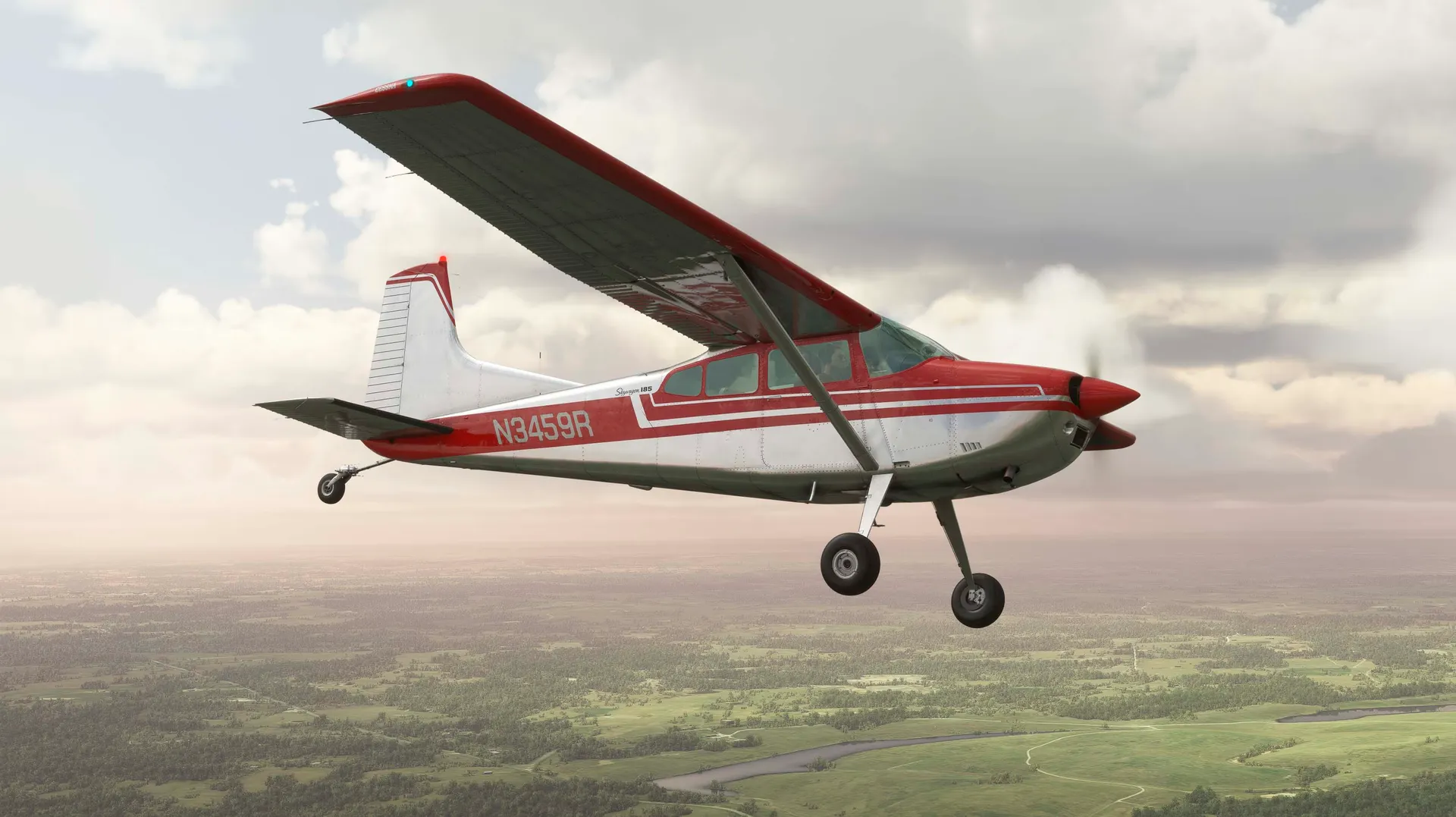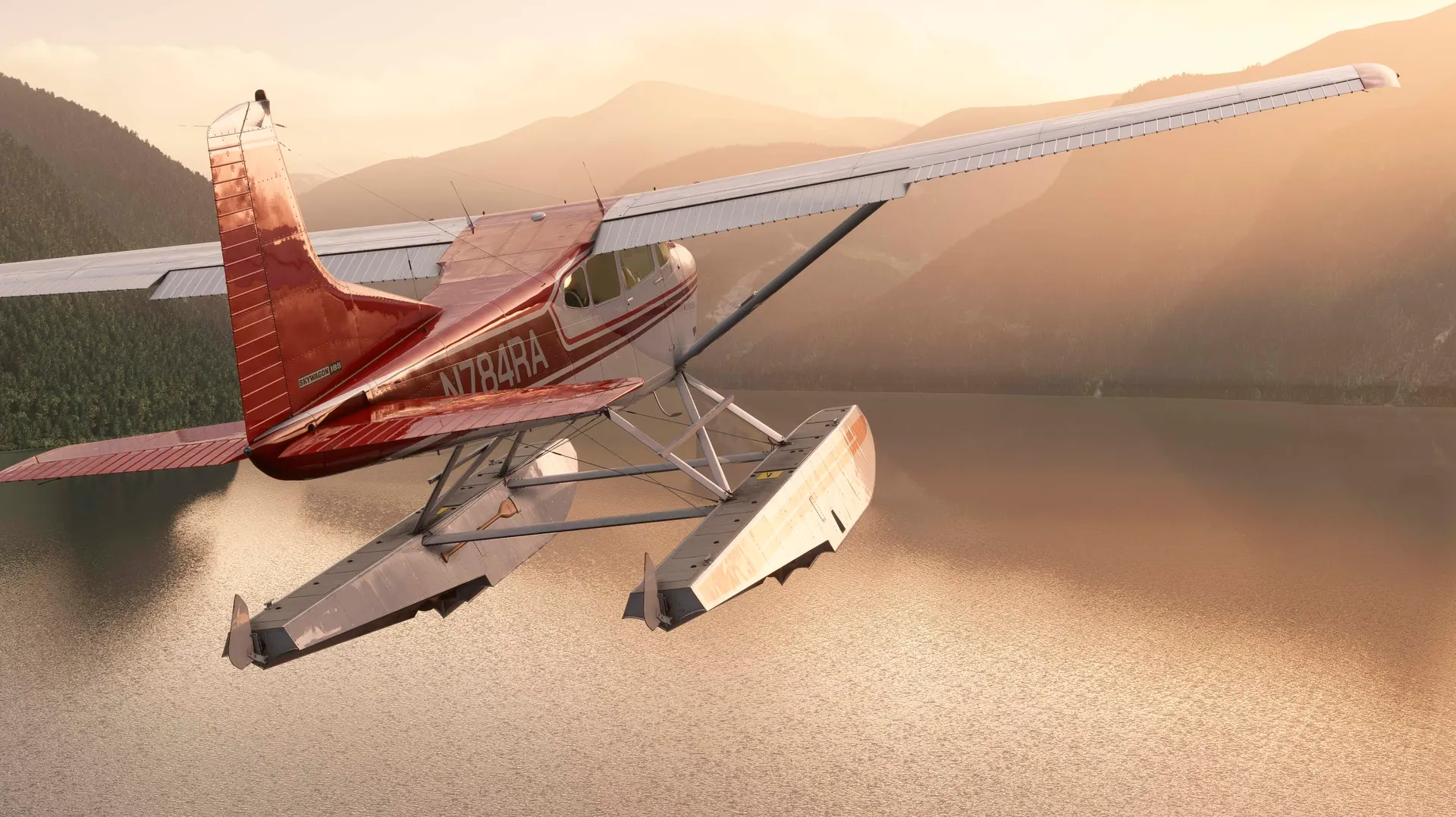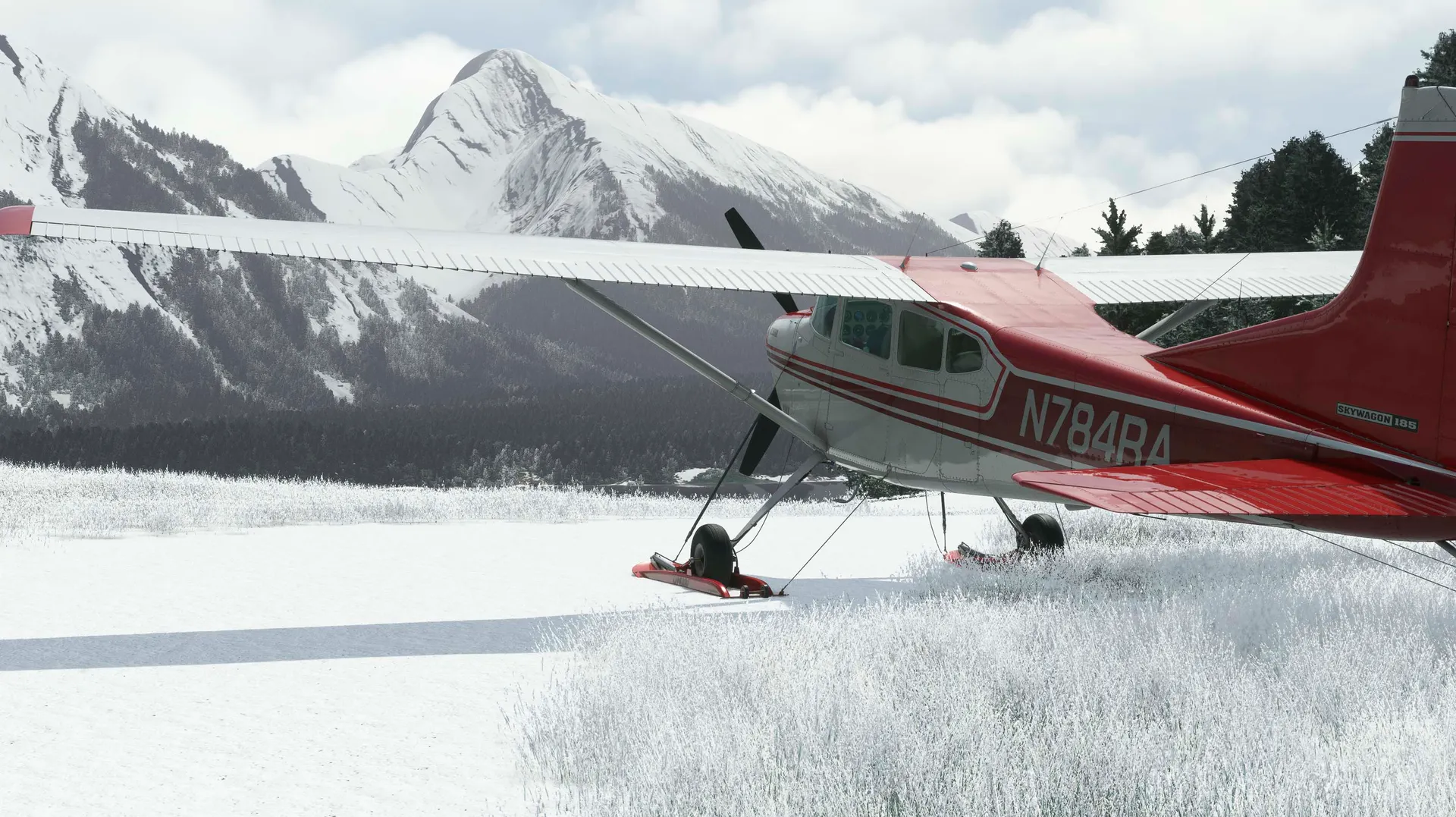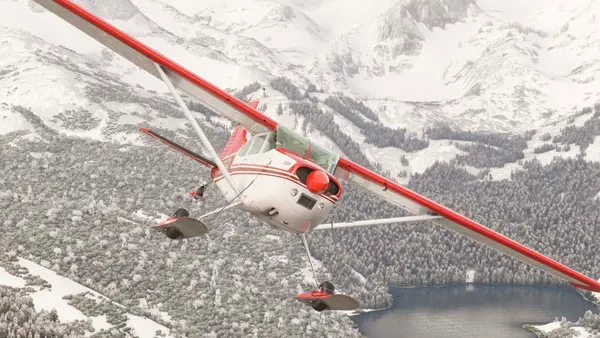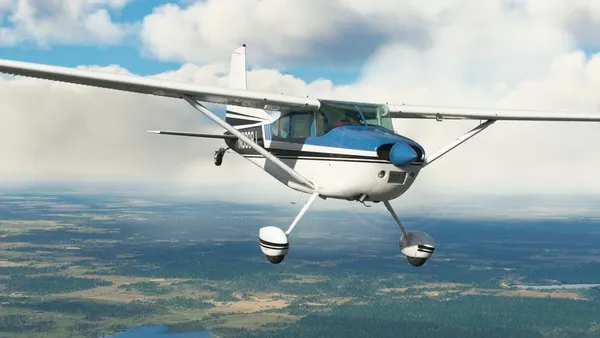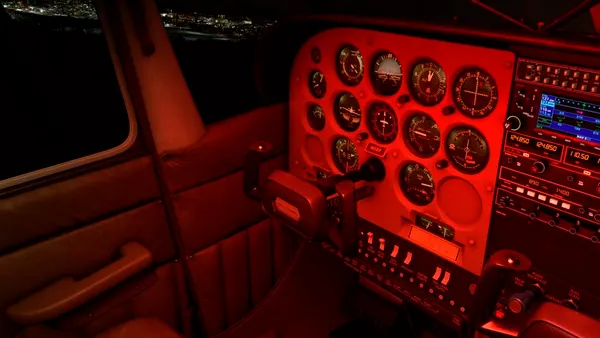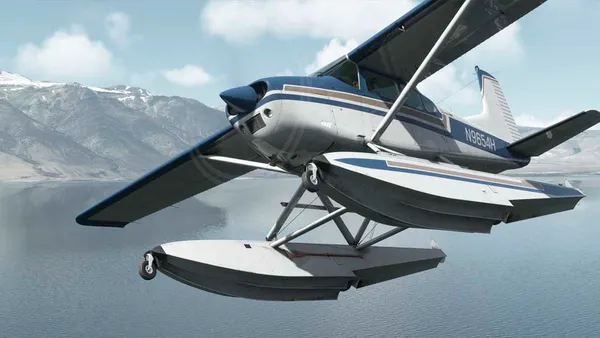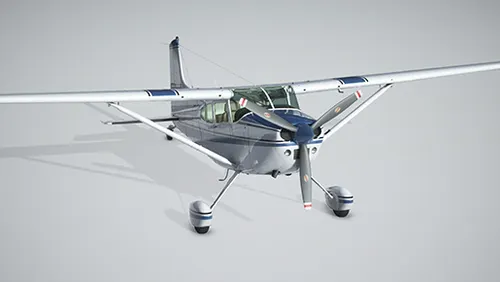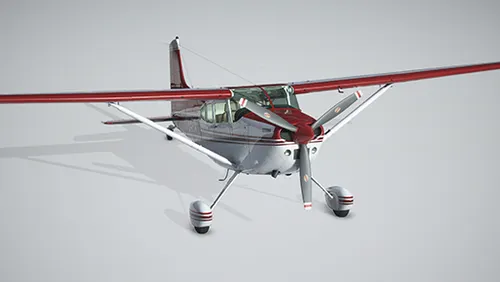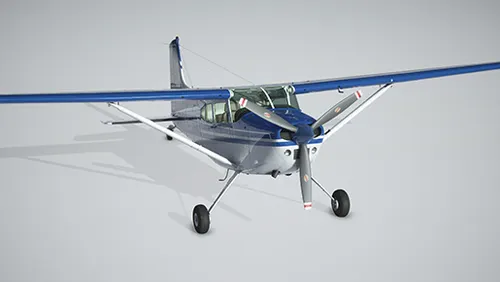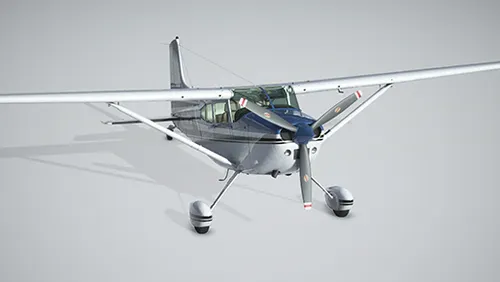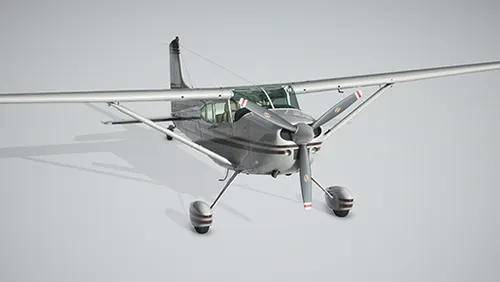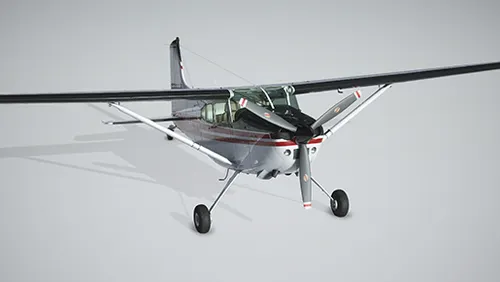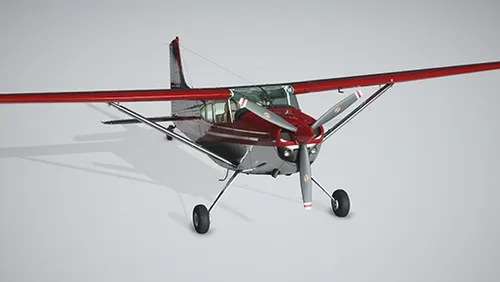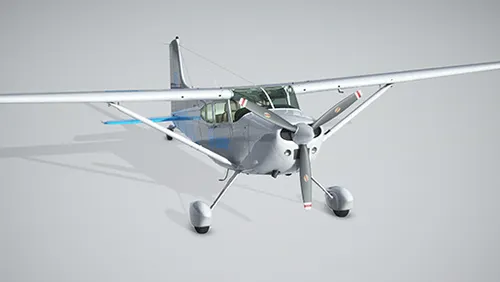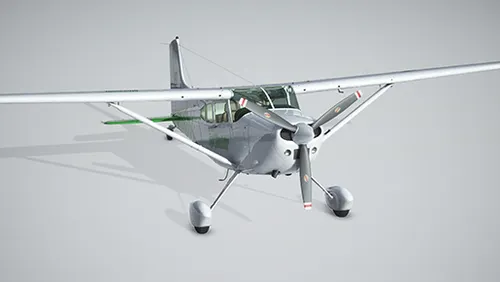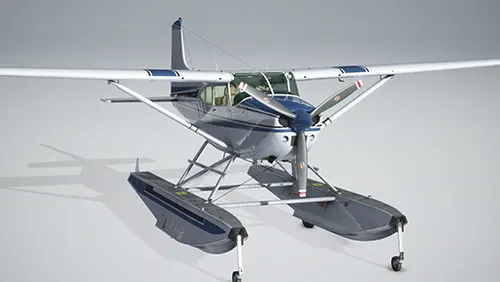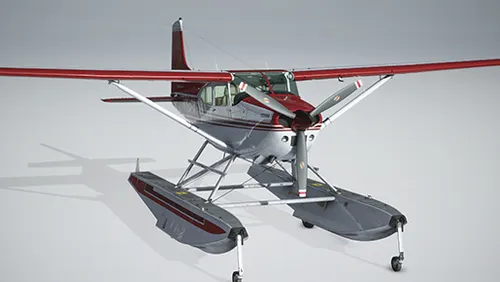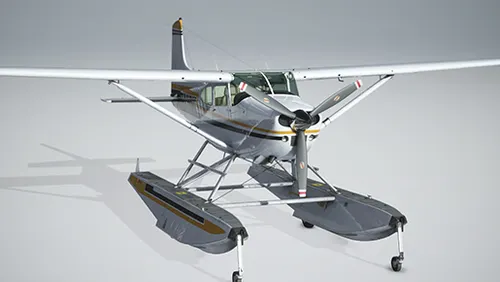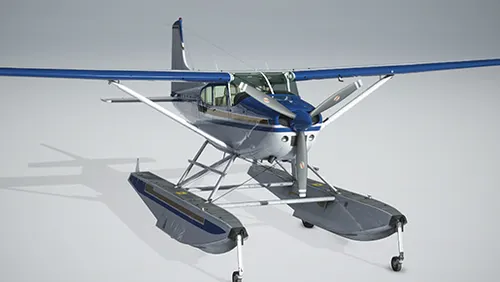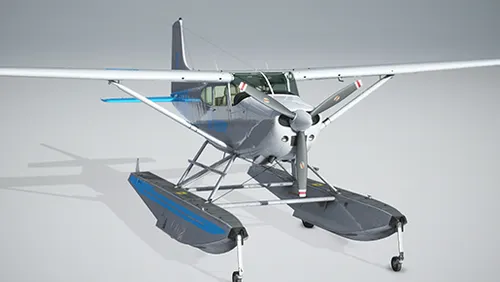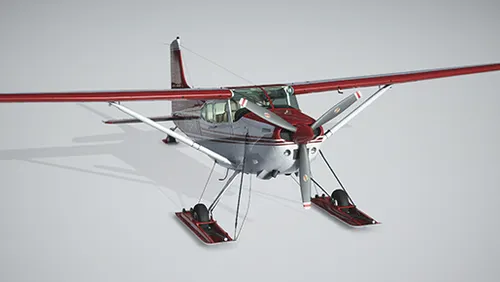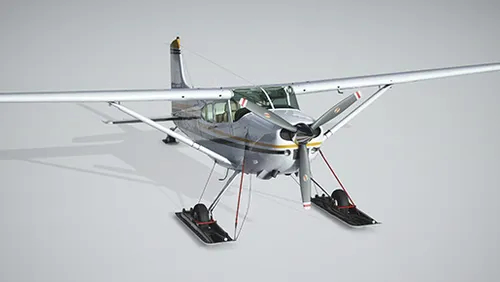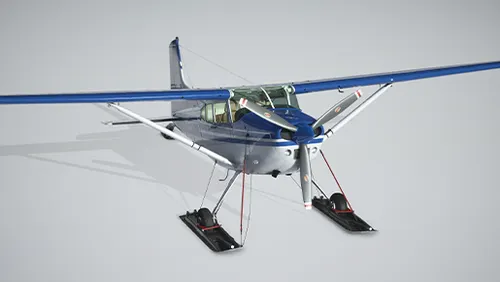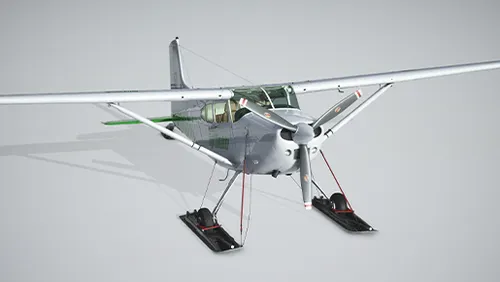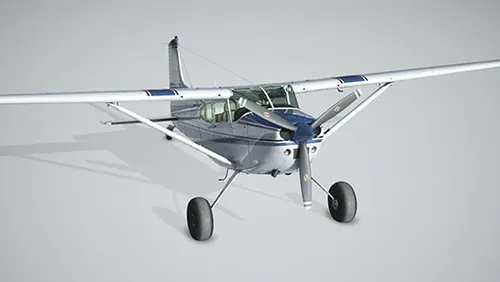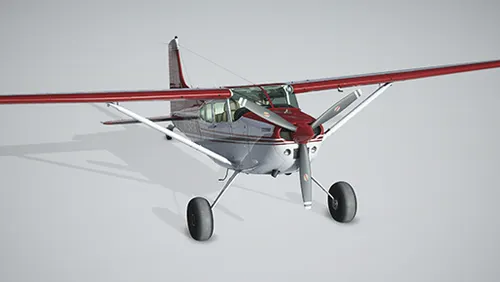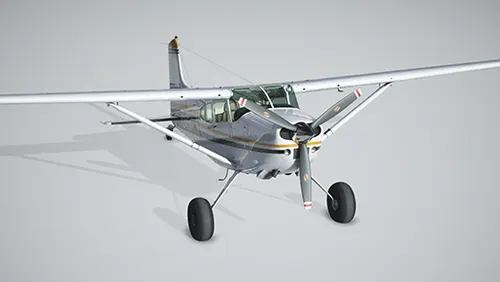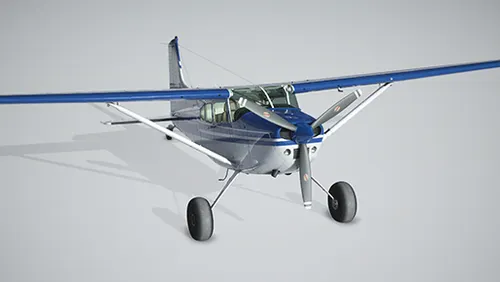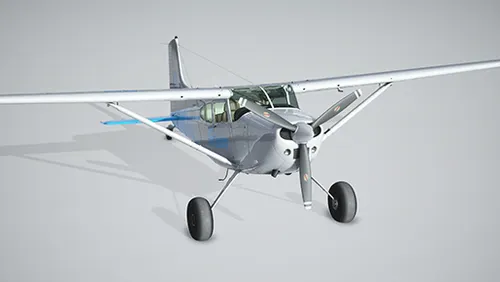The 185F Skywagon is a single-engine, 6-seat light utility airplane manufactured by American aviation company Cessna. The F model is an advanced variant of the 185 Skywagon line with several improvements, including a refined wing, updated instrument panel, and improved external lighting. Cessna introduced the 185F in 1973 and manufactured it until 1985. The model was the final primary variant of the renowned 185 Skywagon lineage.
Cessna initially developed the 185 based on their successful 180. The 180, which took its first flight on May 26, 1952 and was introduced in 1953, features aluminum construction, a high-mounted main wing, seating for up to six, and a standard undercarriage. To create the 185, Cessna added a more powerful engine to the 180 design, increased the size of the vertical stabilizer to accommodate the greater thrust and torque of the powerplant, and strengthened the fuselage. The prototype of the 185 took its maiden flight in July of 1960 and the first production models began flying in the summer of 1961. The 185 became renowned for its power, reliability, forgivingness, and versatility. It was quickly adopted by bush pilots, notably in Canada and in Alaska, due to its STOL (short take-off and landing) prowess and ability to function with skis and amphibious floats.
Several variants of the 185 Skywagon followed the initial release, and the aircraft has been flown on all seven continents. Roles that the 185 Skywagon has served include bush transport (including ferrying climbers onto and off mountains including Denali, North America’s highest peak), exploration and scientific support, aerial photography and videography, flightseeing and tourism, medical transport, and several military mission sets. The aircraft has been flown on all seven continents, and one has been flown solo to both the North Pole and South Pole.
The 185F notably incorporates a “camber-lift” wing with increased main wing camber for optimized STOL performance. It also has dual nose landing lights and a modernized instrument panel. The aircraft continues to be a pilot favorite, owing to its robustness, adaptability, safety, and overall ease of flight.
The 185F, which debuted in 1973, is powered by a six-cylinder, 300-horsepower Continental IO-520-D piston engine that turns a constant-speed 3-blade propeller. Cessna released the 185F Skywagon II, which includes further refined avionics (comprising IFR systems), in 1978. The aircraft measures 25 feet, 9 inches in length and has a wingspan of 35 feet, 10 inches. It has a range of 830 miles, cruises at 167 miles per hour, and has a top speed of 178 mph. It climbs at up to 1,000 feet per minute and has a service ceiling of 17,150 feet above sea level.
